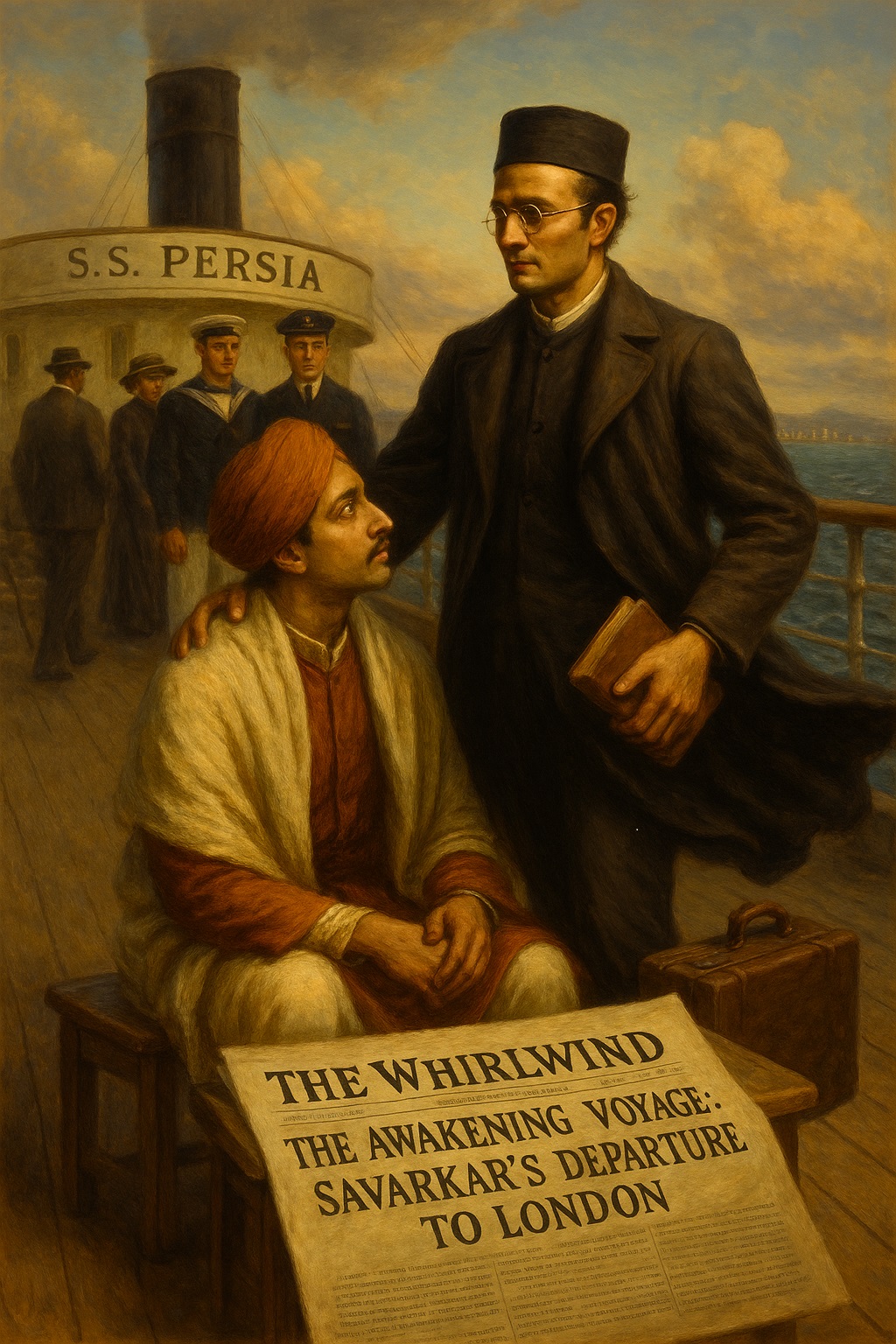In June 1906, a young Vinayak Damodar Savarkar stepped aboard the S.S. Persia, setting sail for England. At first glance, it may have appeared to be a student’s voyage in pursuit of a legal education. But this journey would prove far more consequential—not just for Savarkar, but for the future of India’s freedom struggle.
Funded by the Shivaji Scholarship—a grant offered by the visionary philanthropist Shyamji Krishna Verma and endorsed by nationalist stalwart Bal Gangadhar Tilak—Savarkar’s travel was meant to foster academic advancement. Yet, even before he set foot in London, the voyage became a crucible for his emerging revolutionary spirit.
Shyamji Krishna Verma, founder of The Indian Sociologist and the India House in London, had created a network to support young Indian intellectuals and aspiring nationalists. While Verma preferred theoretical resistance and intellectual debate, Savarkar was forged from a more militant mold—impatient with abstractions, determined to turn ideas into action.
This contrast came into focus aboard the ship itself. Onboard, Savarkar encountered Harnam Singh, a young Sikh student from Amritsar, overwhelmed by homesickness and on the verge of returning to India. Sensing a wavering soul, Savarkar intervened—not with empty comfort, but with a potent mix of empathy and patriotism.
He invoked the sacrifices of history, especially the martyrdom of Guru Gobind Singh’s sons, to drive home a simple but powerful truth: personal suffering is often the price of national awakening. Through impassioned words and a deep sense of fraternity, Savarkar convinced Harnam Singh to persevere—not just with his studies, but with a renewed dedication to India.
Even at sea, Savarkar refused to be idle. Surrounded by fellow travelers and students from India who were largely indifferent—or contractually bound from engaging in politics—he encouraged them to at least think politically. For Savarkar, the purpose of going to England was never personal—it was national. The legal books were secondary. The cause of India’s freedom was paramount.
This journey marked more than a physical crossing. It was the genesis of Savarkar’s involvement with India House, which he would soon transform into the epicenter of anti-colonial activism in London. The S.S. Persia thus became more than a passenger vessel—it became a moving witness to the birth of a new chapter in India’s revolutionary movement.
Savarkar’s voyage to England was not just about reaching a destination. It was about igniting a fire, shaping the course of India’s fight for freedom.
Sources:
GODBOLE, Vasudev Shankar. 2004. Rationalism of Veer Savarkar. Itihas Patrika Prashan: Thane/Mumbai.
KEER, Dhananjay. 1988. Veer Savarkar. Third Edition. (Second Edition: 1966). Popular Prakashan: Bombay (Mumbai).
SAMPATH, Vikram. 2019. Savarkar (Part 1). Echoes from a forgotten past. 1883-1924. Penguin Random House India: Gurgaon.
SAVARKAR, Vinayak Damodar. 1993. Inside the enemy camp. Veer Savarkar Prakashan: Mumbai.
SRIVASTAVA, Harindra. 1983. Five stormy years: Savarkar in London (1906-1911) – A centenary salute to V.D. Savarkar. Allied: New Delhi.


Leave a Reply